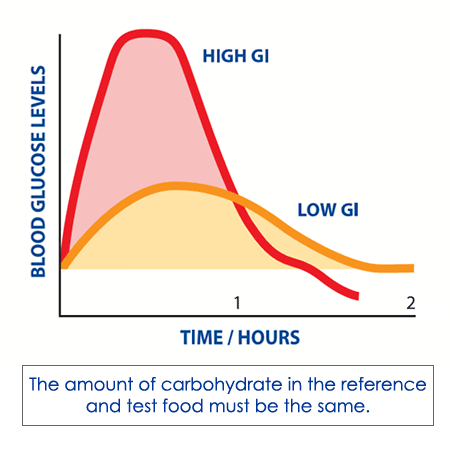While enjoying your ideal weight will involve personal choices and exercise and dietary specifics that are unique to each individual, one general guideline you may want to become familiar with is the glycemic index, because foods with a low glycemic index move through the body’s digestion system slowly, using up more energy and burning more calories in the process.
According to the University of Sydney website (see http://www.glycemicindex.com/about.php), glycemic index is a critical factor in both weight loss and prevention of disease. In Australia glycemic index (GI) is now being included on labels, and this is why:
The glycemic index (GI) is a ranking of carbohydrates on a scale from 0 to 100 according to the extent to which they raise blood sugar levels after eating. Foods with a high GI are those which are rapidly digested and absorbed and result in marked fluctuations in blood sugar levels. Low-GI foods, by virtue of their slow digestion and absorption, produce gradual rises in blood sugar and insulin levels, and have proven benefits for health. Low GI diets have been shown to improve both glucose and lipid levels in people with diabetes (type 1 and type 2). They have benefits for weight control because they help control appetite and delay hunger. Low GI diets also reduce insulin levels and insulin resistance.
Recent studies from Harvard School of Public Health indicate that the risks of diseases such as type 2 diabetes and coronary heart disease are strongly related to the GI of the overall diet. In 1999, the World Health Organisation (WHO) and Food and Agriculture Organisation (FAO) recommended that people in industrialised countries base their diets on low-GI foods in order to prevent the most common diseases of affluence, such as coronary heart disease, diabetes and obesity.
There is a lot of information on the website, for sure, and you will benefit from a more in-depth understanding of metabolism and health, but for a birds-eye-view, here is one image they use that will help you have a good sense of how to make healthier choices.
This week, get into the habit of choosing foods that are lower on the glycemic index: brown rice, whole grain pasta, steel cut oats, and fruits and vegetables. The title of the September 10, 2012 edition of NPR’s Food Blog THE SALT might just sum things up nicely: Low and slow may be the way to go.

